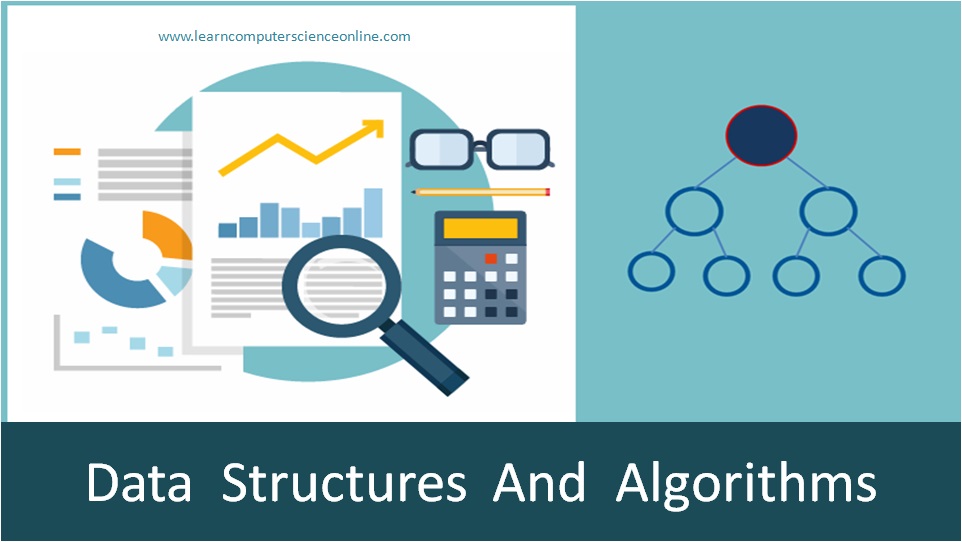
Data Structures And Algorithms
The data structures and algorithms is the one of the important topic for computer science students. In computer programming , the data structure is a fundamental building block for developing an efficient software application .
And therefore , the programmer must have a good knowledge and understanding of the data structures.
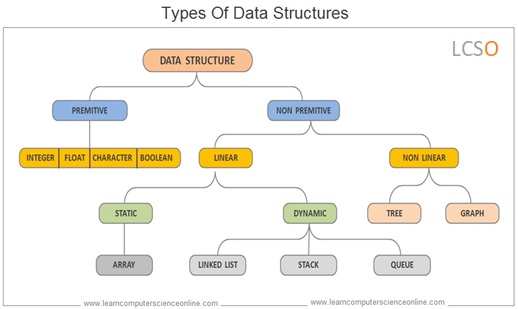
The Data Structure defines the way in which various program data elements are organized and stored into the memory so that the data can be used efficiently.
This Data Structures And Algorithms tutorial extensively covers all the important topics such as types Of Data structures , Linear And Non-Liner Data structures , Array, Pointer, Structure, Linked List, Stack, Queue, Graph .
The data operations such as Traversing , Searching , Sorting And other topics related to the algorithms.
Data Structure And Algorithm
Table Of Contents
Data Structures And Algorithms
Interview Questions Answered
- What Is Data Structure ?
- Why DS knowledge is important for Computer Science students ?
- What are different types of data structures ?
- What are Primitive And Non-Primitive data structures ?
- What is an Abstract Data Type ( ADT ) ?
- What is an Algorithm ?
- What are different types of Algorithm ?
What Is Data Structure ?
The data structure is the most fundamental building block in computer science . And therefore , a good knowledge of data structure is important for a software application design and development .
The data structure mainly deals with the organization of the data in a program and the operations allowed on that data .
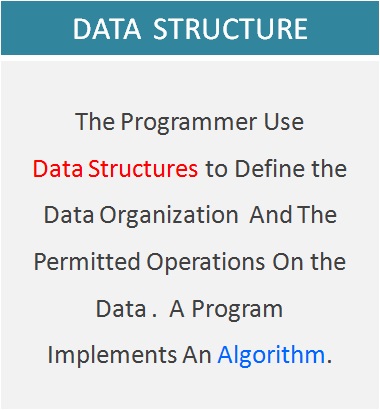
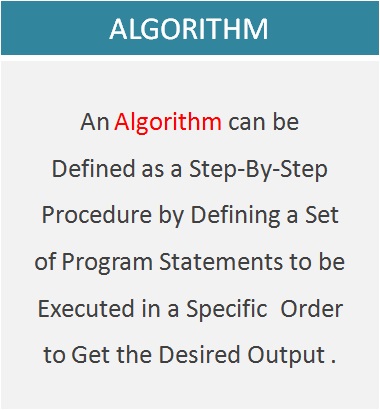
In computer science , the data structure is a specific way to organize and store the data in a computer’s memory. The programmer can organize the data and also define the permitted operations on the data with the help of data structure so that the data can be used more efficiently .
In most simple terms , anything that used to store and organize the program data , while writing a program code is a data structure .
Some data structures and the operations allowed are predefined in the programming language itself .Whereas the programmer can also define a data structure to meet any specific requirement . Such DS are referred as user defined data structures.
What Is the Use Of Data Structure ?
The computer programs are designed to handle different kinds of data such as text , numbers , images , audio , video and other types .
The software programs are designed and developed for different types of applications. And therefore , the computer programmers have to deal with all kinds of data such as text and numerical data , images , audio and video .
From the software application performance point of view , the efficiency and the performance of the software program depends upon how the data is stored , organized and grouped together, during the program execution . And therefore computer scientist , software engineers , software developers must have a good knowledge of data structures .
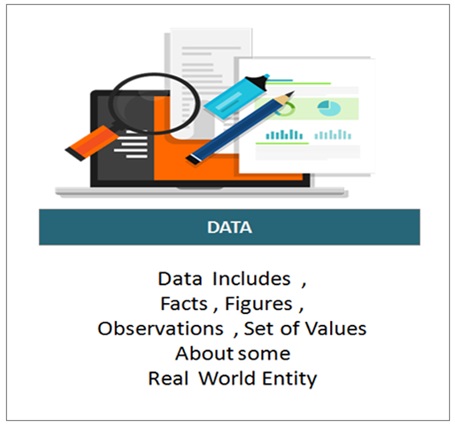
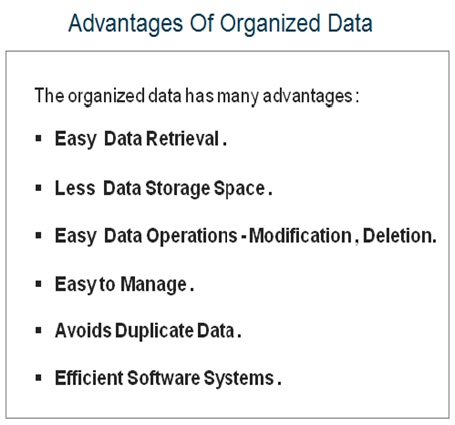
Types Of Data Structures
The data structures ( DS ) can be broadly grouped in to two basic types and that includes Primitive Data Structures and Non-Primitive Data Structures . These DS are grouped on the basis of either pre-defined in the programming language or defined by the user .
Some data structures are built in to the programming language itself which are readily available to the programmer for its use and these DS are referred as primitive data structures .
For example , the most common primitive data structures which are generally supported by almost all programming languages include Integer , Float , Character and Boolean .
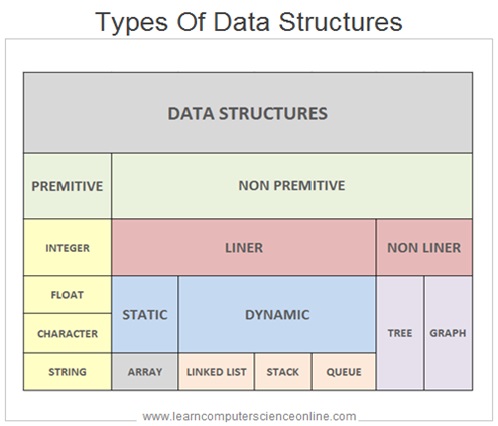
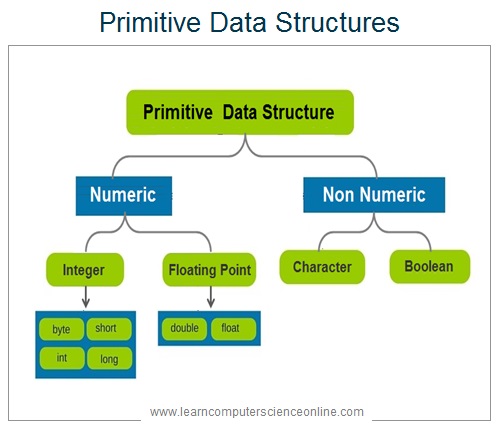
The Non-Primitive Data Structures can be further classified as Linear DS And Non Linear DS . The Linear DS can be further Classified in two further subcategories such as Static and Dynamic depending upon the ability of the DS to expand or shrink as per the program needs .
The Static Linear DS includes Arrays , whereas the Dynamic linear DS includes Linked List , Stack and Queue. The Non Linear DS includes Trees and Graph . Let us now discuss each of these DS one by one in detail .
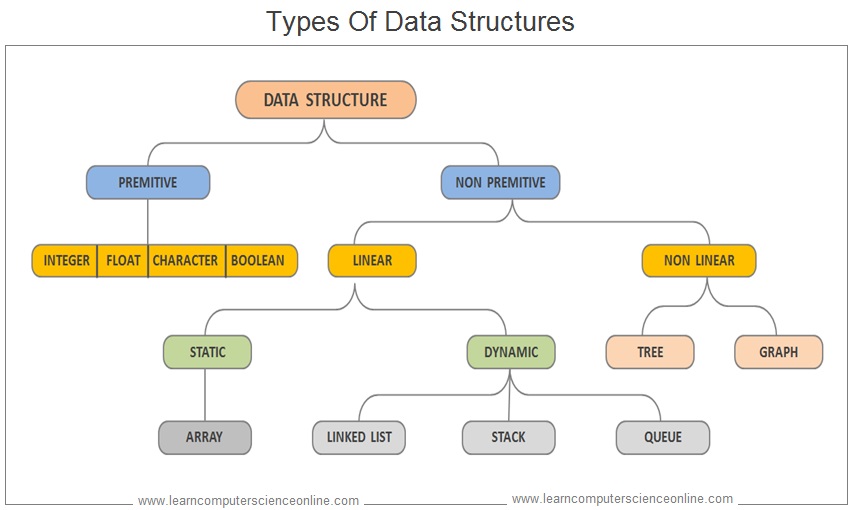
Primitive Data Structures
The primitive data structures are the programming language defined data structures which are built into the programming language itself , which programmers can readily use in the program . Almost all programming languages support the primitive data structures .
The examples of primitive data types include integers , floating point numbers and one single individual characters in text.
The primitive data types are readily available to the programmer and doesn’t require a large amount of data for representation.
Each Character correspond to a single specific reference value in an ASCII table. The Integers numbers can represent a small to a very large values without the decimal point.
Whereas the Boolean values needs only two possible binary numbers that is either 0 ( zero ) or 1 ( one ).
Primitive Data Structure Types
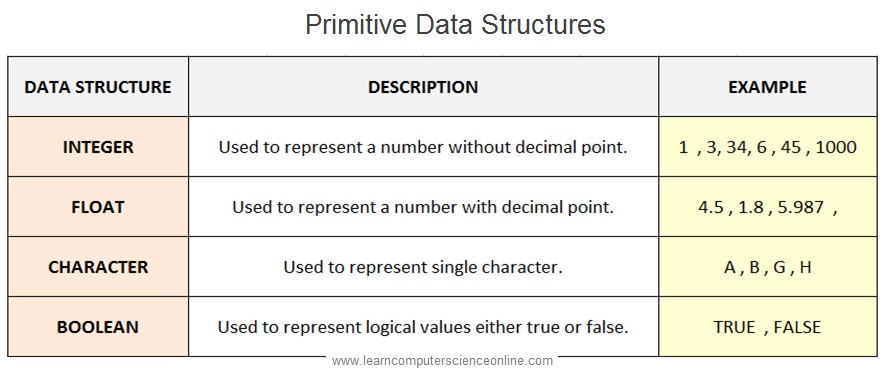
Non-Primitive Data Structures
The non-primitive data structures are user ( programmer ) defined data structures which are also referred as user defined data structures .
The non-primitive data structures are derived from primitive data types by combining two or more primitive data structures. These DS can be further sub divided as linear and non- linear data structures .
The Non-primitive data types are not pre-defined in the programming language . And therefore , the programmer has to define as per the program requirements.
Characteristics Of Non-Primitive Data Structures
For example , In Java programming language, the non-primitive data types are referred as “objects” because these objects are created run-time by defining the Classes . An object may contain any primitive type of data as per the program requirements.
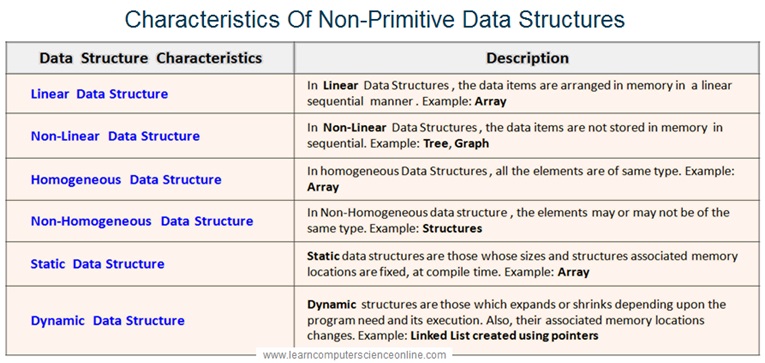
Arrays
Linear Data Structures
In computer science , an array is a linear data structure ( also commonly referred as an array ) is collection of elements of same data type . An array is linear data structure because the array elements ( Values ) are traversed in sequential manner .
The simplest type of linear data structure is a one-dimensional array . An array is organized in a single row consisting of number of pre-defined number of data elements . These data elements are stored in a contiguous memory locations allocated by the operating system.
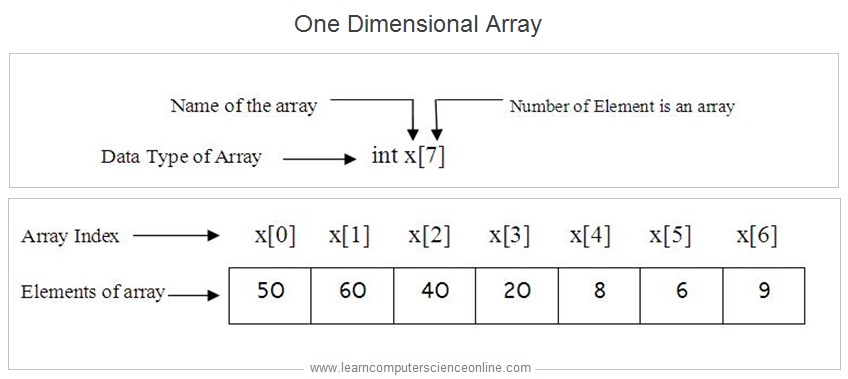
Linear Data Structures
Where To Use Arrays ?
While writing a programming code , sometimes the programmer is required to store large number values of the same data type such as student marks , employee contact numbers , customer order numbers and so on .
In such situations , one solution is to declare large number of variables using different variable names which is not a practical solution .
Instead of creating large number of variables , the programmer can use an array DS , which allows the programmer , to store large number of values of the same data type using same variable name .
Let us consider one simple example of designing a software for a school . If a programmer wants to store the names of 100 students , then programmer has two options .
In the first option ( Not recommended ) , a programmer can crate 100 variables of string type and assign student name to each of these variable . This program will work but it is the most inefficient program .
In the second option ( Recommended ) , the programmer can simply create an array of students name ( String data type ) with capacity to store 100 names . This is a much better way of organizing program data .
Linear Data Structures
Types Of Arrays
Depending upon the programming needs , the programmer can choose different types of arrays which include one , two and multi-dimensional arrays.
Examples Of One , Two , Three Dimensional Arrays
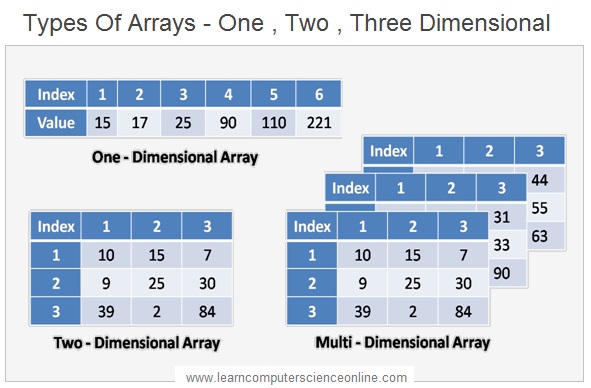
Linked List
Linear Dynamic Data Structures
In computer science , the linked list is a linear dynamic data structure. It is a collection of data elements called nodes . Each node consist of two fields . The first field of the node contains the actual value whereas the send field of the node contains a pointer ( a memory address ) which points to the next node .
In simple terms , the linked list can be visualized as a chain of nodes , where every node points to the next node. And therefore it offers advantage of flexibility of size.
Linked List Example
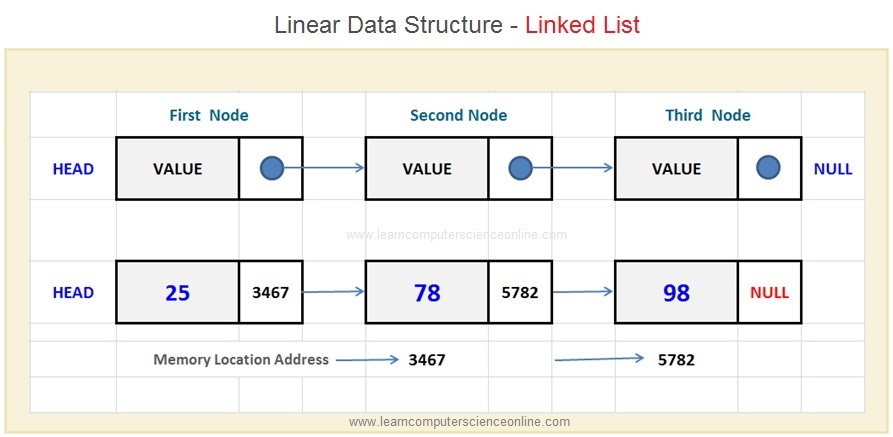
The linked list is a dynamic linear data structure. That means , the programmer can dynamically modify the size of the linked list during the program run-time as per the needs .
This was not possible in case of array which is static data structure and programmer has to define the .
The linked list does not have indexing system to access specific data element and makes use of traversing to perform desired operation .
Linear Dynamic Data Structures
Types Of Linked List
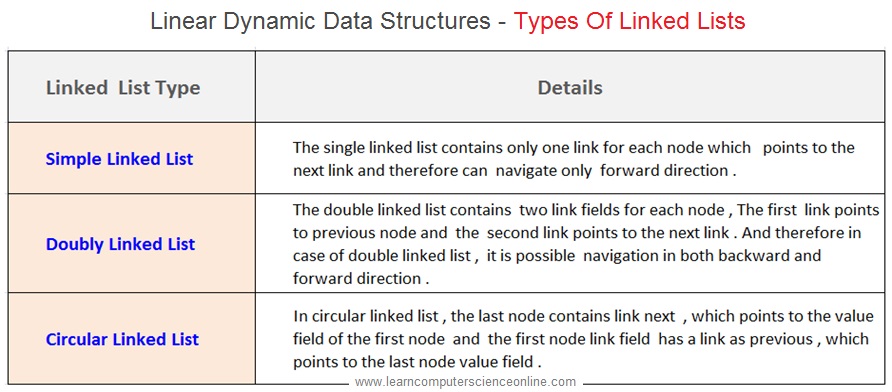
Non-Linear Dynamic Data Structures
Trees And Graphs
A non-linear data structure is a data structure in which a data item is connected to several other data items and the data items are not organized sequentially. And therefore it is called as non-linear data structure.
In case of non-liner data structure it is possible for a data item to be connected with one or more data items. The examples of non-linear data-structures includes Graphs and Trees.
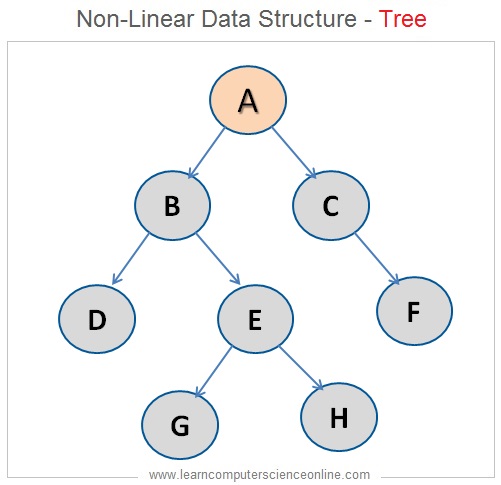
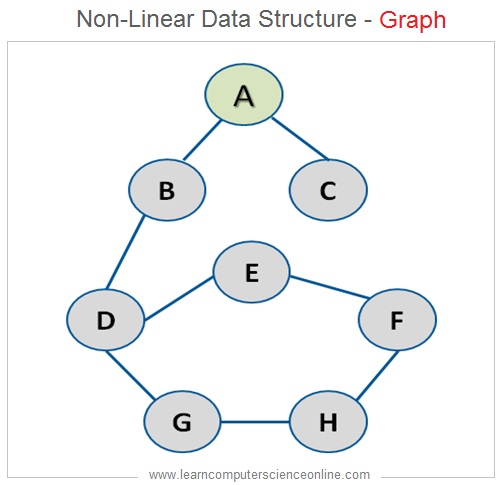
Abstract Data Type ( ADT )
Abstract Data Type ( ADT ) is an important topic in computer science . In order to understand the concept of ADT , we need to familiar with some fundamental programming concepts such as program variables , different data types , OOP concepts such abstraction , encapsulation and the concept of class .
While writing a program code , the programmer needs to declare the variables to store the data . This program data will be operated upon as per the program instructions . The variables are named memory locations where different types of data is stored that can be referred in program code with different variable names .
The program data can be of different types such as integer , float , string , Boolean . The data type for a variable signifies the type of the data that will be stored and the associated operations .
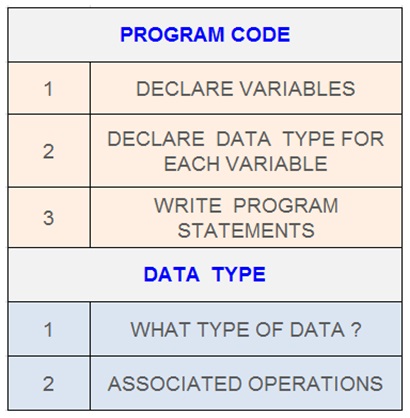
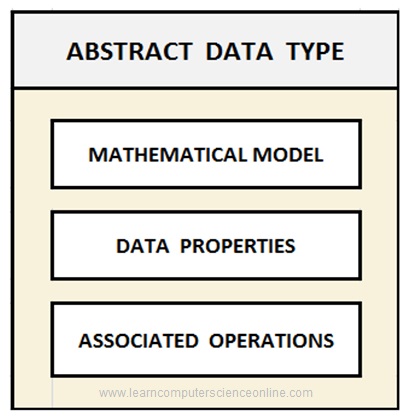
An ADT – abstract data type represents a mathematical model which provides an abstracted view of the data structure in terms data properties and the operations allowed on the data .
Each programming language provides some predefined data types in built in to the language which are referred as primitive data types . In some situations the primitive data types may not be sufficient and in such cases the programmer can define a data type along with its associated operations .
Abstract Data Type ( ADT ) Examples
In Object Oriented Programming ( OOP ) the concept of Class represents an ADT . We can define a Class as a blueprint for creating the objects .
In OOP , the Class consist of data members and the associated operations which operates on the data members . The Class is an example of an ADT which binds together the data and the associated operations .
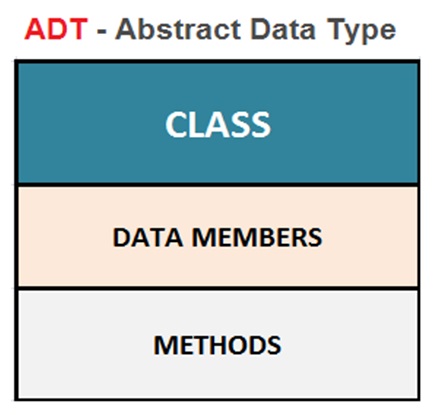
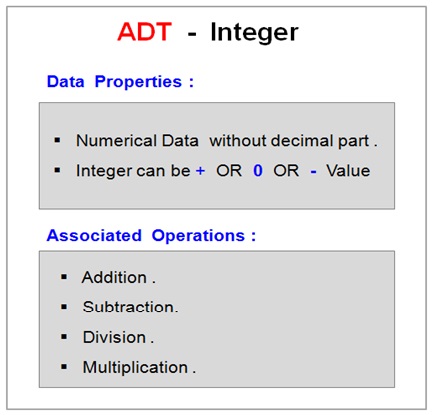
Let us consider one example of an integer data type is one of the most commonly used primitive data type .
The mathematical concept of an integer, along with operations that manipulate integers, form a ADT. The int variable type is a physical representation of the abstract integer.
The int variable type is an ADT because it has some well defined data properties and the operations that are associated with integer such as addition , subtraction and other operations .
Data Structures And Algorithms
Introduction To Algorithms
The computer program is a set of program instructions which provides the direction to the computer’s CPU to execute the desired operations as per the program instructions.
Before writing a computer program code , the programmer has to first decide the logic of the program and then translate this logic in to the sequence of logical steps which implements that logic to solve the problem in a particular manner and this logic is referred as an program algorithm.
What Is Algorithms ?
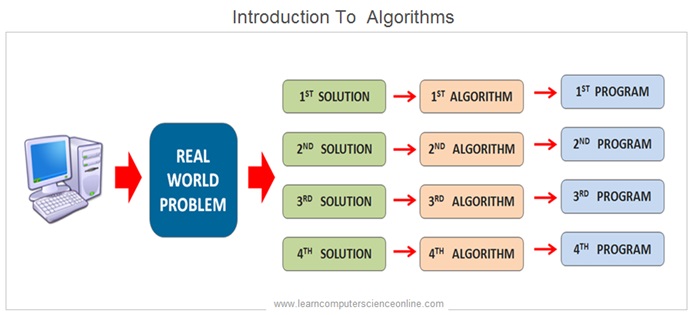
There can be many possible solution to a problem . And therefore , the programmers must logically think and explore different algorithms on its merits.
The programmer must explore the various alternate approaches to find the best possible algorithm that provides the solution which is most efficient .
Each computer program implements a specific algorithm . The Efficiency of the computer system to solve a particular problem depends upon the efficiency of the program code which directs the computer to solve that problem in a particular manner .
Now we are going to discuss various aspects of algorithm in detail .
What Is Algorithms ?
An Algorithm can be defined as a step-by-step procedure by defining a set of instructions which implements a specific logic and executed in a specific order to get the desired output .
Each Algorithm only provides one specific approach which leads to the solution. An algorithm only indicates an approach that leads to one solution .
And therefore, algorithms are programming language independent and can be implemented using any programming language.
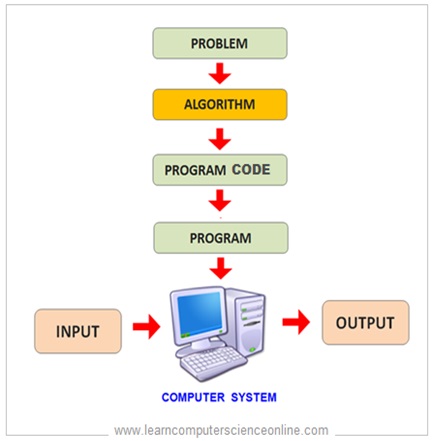
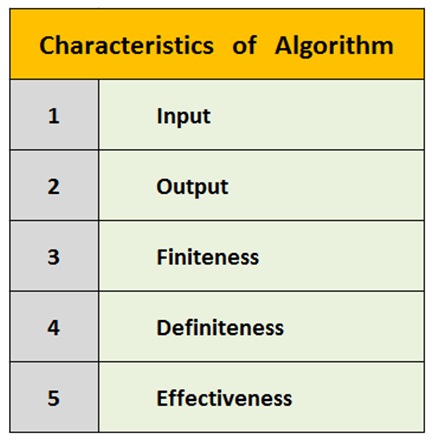
The computer programmers create algorithms during the software design stage before writing a program code . Each algorithm provides different approach to solve the problem in specific way .
The programmers then analyze each of these algorithms against some standard evaluation criterion. These algorithm are evaluation on two criterion that includes Time Complexity and Space Complexity to evaluate the algorithm performance .
After careful evaluation , the programmers then finally select the algorithm for its implementation in the program code .
The algorithm which provides the best approach to solve a particular problem is implemented in the final code in the software project .
Data Structures And Algorithms
Types Of Algorithms
Classification Of Algorithms
There are many types of Algorithms that can be classified depending upon many parameters . However some of the fundamental types of algorithms include :
Join The Best Seller
Computer Science Online Course
This is the most comprehensive and unique Computer Science And Programming Fundamentals course Online which will give you in depth understanding of most important fundamental concepts in computer science And Programming .
